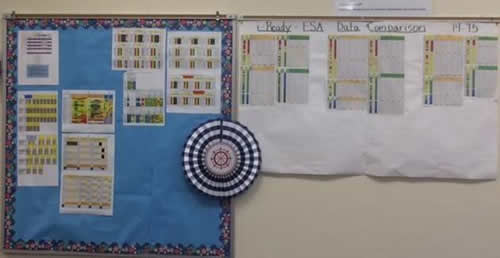For the last six years, data has been part of our “secret sauce” here at Bronson Elementary School in Bronson, Fla. Many of our students come from economically disadvantaged homes so we know we need to continually work harder than most schools to help our students succeed academically—and data helps us do this.
Our teachers and administrators are constantly looking at data trends—including data over periods of time, across grade levels, and for individual teachers and subgroups of students—to help drive instruction and student achievement. Specifically, Bronson uses schoolwide data to determine core instructional needs and proficiency targets. We use grade-level data for insight into groups for intervention, classroom data to support differentiation in the classroom and teacher effectiveness goals, and student data to identify intervention needs and IEP goals.
The data we analyze is collected from various sources, including the Florida Standards Assessment (FSA) in reading and math for grades 3-5 and the Florida Comprehensive Assessment Test Science for grade 5. We also use diagnostic data that we collect three times a year using the i-Ready program for reading and math in grades K-5.
Below are three effective strategies for using this data to support all of our students.
Talk with each student about his or her goals.
Setting goals is important for everyone, including students—the more students are involved in the process, the more motivated they are to succeed. Our teachers have data chats with students prior to their diagnostics to discuss where they want to score. This sets expectations and helps students take ownership of their own learning.
As principal, I also go into classrooms and talk to students one-on-one and go over their data and their concrete goals for improvement. This helps to further keep students accountable and reinforces to them that improvement is a team effort.
Make the data visual for everyone to use.
To have an overall view of our school’s data, we created a data room (see photo) that displays all of our students’ data. This lets us determine which students need additional support, where they are falling behind, and what intervention services they need.
Based on this, we assign our students to small, grade-level group instruction with a teacher who is strong in the given skill they need help with. This daily intervention time is built into the school day with 30 to 45 minutes reserved for the groups to work on specific skills. We have three days of reading and two days of math, unless otherwise specified by student needs.
We also provide intervention support for smaller group sizes, as well as ELL and ESE students. In the classroom, teachers are also doing their own instructional groupings and providing intervention to students as needed.
Identify year-to-year trends.
We use our end-of-year diagnostic data to see if we need to make schoolwide adjustments to our core instruction. We identify patterns and trends—both by cohorts and individual students—and make changes to our instructional plans to ensure student growth.
The year-to-year data also helps ensure teacher buy-in, especially with our novice teachers, to our school’s data culture, which also indirectly helps our students. There is often a big learning curve for our new teachers, but when they look at the data and see how the programs we have in place are helping students succeed, they trust in the process.
As a result of our data-driven approach, our students are thriving. Our school has improved from a “C” school in the 2014-15 school year to a “B” school in 2015-16 and 2016-17 school years and we have been the highest performing elementary school in our district for five years in a row. Additionally, our students’ proficiency on the FSA has jumped double digits in reading and nearly double digits in math—a positive trajectory that we will work hard to continue!
- 4 ways to encourage play in education - April 25, 2024
- CoSN IT Leader Spotlight: Lisa Higgins - April 25, 2024
- It’s time to pay student teachers - April 25, 2024

